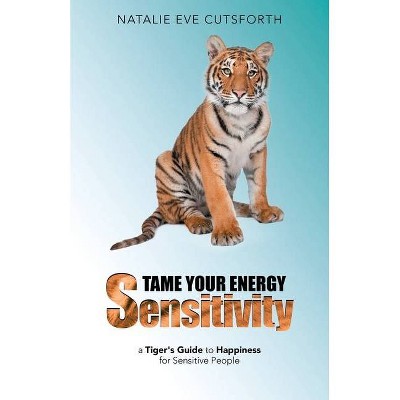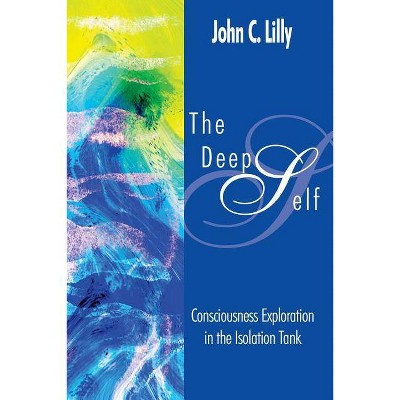Tame Your Anxiety - by Loretta Graziano Breuning (Paperback)

Similar Products
Products of same category from the store
AllProduct info
<p/><br></br><p><b> About the Book </b></p></br></br>Learning to calm anxiety is a difficult task after years of responding to your brain's warning signs for threats. But understanding the mechanisms that launch you into anxious states will help you train your brain to make new connections, new paths to awareness and calm. Tame ...<p/><br></br><p><b> Book Synopsis </b></p></br></br>Anxiety is natural. Calm is learned. If you didn't learn yesterday, you can learn today. It's not easy, of course. Once your natural alarm system is triggered, it's hard to find the off switch. Indeed, you don't have an off switch until you build one. Tame Your Anxiety shows you how. Readers learn about the brain chemicals that make us feel threatened and the chemicals that make us feel safe. You'll see how your brain turns on these chemicals with neural pathways built from past experience, and, most important, you discover your power to build new pathways, to enjoy more happy chemicals, and reduce threat chemicals. This book does not tell you to imagine yourself on a tropical beach. That's the last thing you want when you feel like a lion is chasing you. Instead, you will learn to ask your inner mammal what it wants and how you can get it. Each time you step toward meeting a survival need, you build the neural pathways that expect your needs to be met. You don't have to wait for a perfect world to feel good. You can feel good right now. The exercises in this book help you build a self-soothing circuit in steps so small that anyone can do it. Once you learn how it's done, and how it can help ease your anxiety, you will learn how to handle situations in which you feel threatened or anxious. Understanding the underlying mechanisms will help you stop them before they get ahead of you.<p/><br></br><p><b> Review Quotes </b></p></br></br><br>[Bruening] focuses on neurochemistry to help readers cope with anxiety in this approachable guide. She defines anxiety as a flood of the stress chemical cortisol, an endemic feature of the mammalian brain that evolved to detect threats. She then explains her taming tool: take a pause to determine the actual need, distract oneself with an immersive task for 20 minutes, and plan a next step. Bruening grounds her analysis in chemical considerations, tying the pleasure from reaching goals to dopamine, the drive for social inclusion to oxytocin, the need for social respect to serotonin, and relief from physical pain to endorphins. Bruening also explains how her strategy can create new connections and habits to aid the flow of the positive chemicals to the brain. She highlights possible stumbling blocks in a chapter on general pitfalls, and in another on the overuse of food as a reward. Bruening opposes the contemporary medical model of mental health ("The more you believe in an external fix, the harder it is to take internal action"), a stance that makes her suggestions better suited to readers with fleeting worries rather than those with clinical anxiety. Nevertheless, readers with mild anxiety will get much out of Bruening's in-depth investigation.--Publishers Weekly<br><br>According to Breuning, asking someone to help control your brain is like asking another rider to control your horse. Control comes from within and from understanding just what your mammal brain wants and needs. The human brain is wired to crave happy chemicals, and we are rewarded with these chemicals when the brain strives toward a goal, feels a part of the group, gets recognition, and faces pain. Anxiety occurs when these needs are not met. Keeping this in mind, Breuning outlines a three-step plan to combat anxiety. It includes determining what the brain really wants, distracting the brain by spending 20 minutes on a consuming, pleasurable task, and finally taking one step toward achieving the goal. The author offers suggestions for possible goals, tasks, and action based on her own and others' experiences. She believes in designing a program based on an individual's needs and warns of the dangers of seeking relief from anxiety with food, alcohol, and drugs (including prescriptions). Breuning presents a convincing case for controlling anxiety by tapping into natural instincts and drives.--Booklist<br><br>I read with rapt attention as Loretta Graziano Breuning drew from her own experience and that of gazelles to bring complex brain science to life. Tame Your Anxiety: Rewiring Your Brain for Happiness lays out why our brains develop as they do, and how to carve new neural pathways to shift out of anxious patterns. A practical, relate-able, sophisticated guide to changing even deeply entrenched ways of living in the world. This is a book for people who want to understand not only the hows but also the whys of rewiring the brain for happiness.--Dawn Huebner, Author of Outsmarting Worry: An Older Kid's Guide to Managing Anxiety<br><p/><br></br><p><b> About the Author </b></p></br></br>Loretta Breuning is Founder of the Inner Mammal Institute and author of Habits of a Happy Brain: Retrain your brain to boost your serotonin, dopamine, oxytocin and endorphin levels; and The Science of Positivity: Stop Negative Thought Patterns by Changing Your Brain Chemistry. She is Professor Emerita of Management at California State University, East Bay. The Inner Mammal Institute offers resources that help you rewire your mammalian brain chemistry, including books, videos, podcasts, blogs and graphics. Dr. Breuning's work has been translated into Spanish, Russian, Chinese, Arabic, French, Turkish, German, and appeared on Forbes, NPR, Wall St Journal, Psychology Today, Time, Fox, NBC, Dr Oz, Cosmopolitan, Real Simple, Men's Health, and many podcasts.
Price History
Price Archive shows prices from various stores, lets you see history and find the cheapest. There is no actual sale on the website. For all support, inquiry and suggestion messages communication@pricearchive.us




















